 well i've had a few distractions, but i've finally made it to the southland museum here in invercargill . i'm hoping to figure out how to accomplish my current job of getting rid of these flax baskets. my boss ms. rhonwyn wasn't too clear or specific on how this was going to work?
well i've had a few distractions, but i've finally made it to the southland museum here in invercargill . i'm hoping to figure out how to accomplish my current job of getting rid of these flax baskets. my boss ms. rhonwyn wasn't too clear or specific on how this was going to work?
so here goes nothing...
the worst thing that could happen is i get to see a new museum!!!

 okay in front of the museum is both an awesome, and yet really saddening array of specimens. they have a number of fossil trees from a new zealand petrified forest. this is the cool. the saddening part this forest is apparently somewhere in the catlins... meaning i just drove by a major fossil field, and didn't see it!!!
okay in front of the museum is both an awesome, and yet really saddening array of specimens. they have a number of fossil trees from a new zealand petrified forest. this is the cool. the saddening part this forest is apparently somewhere in the catlins... meaning i just drove by a major fossil field, and didn't see it!!!
i guess that's why they bring these sorts of things to a museum, so you can see them. i would have loved to check out an actual fossil site though. i haven't gone prospecting for fossils in far too long (over a year in fact... last time was at devil's coulee!).
 i'm falling in love with this museum, people of the web wide world. not only did they have fossils out front, but another palaeo related object. a statue of a tuatura!
i'm falling in love with this museum, people of the web wide world. not only did they have fossils out front, but another palaeo related object. a statue of a tuatura!
tuatara's are one of the "living" fossils. which a giant statue of is pretty cool, but reading the plaque i learned this museum breeds them here! more on that shortly...

 inside the front door is a very important new zealand icon. the modified indian motorcycle of burt munro which was used to break several land speed records in the 1960's. some of these records remain unbroken even today!
inside the front door is a very important new zealand icon. the modified indian motorcycle of burt munro which was used to break several land speed records in the 1960's. some of these records remain unbroken even today! i'd barely set foot in the place, and i'd seen so much. now that i was actually in the museum what was here, and where was it?
i'd barely set foot in the place, and i'd seen so much. now that i was actually in the museum what was here, and where was it?fortunately i stumbled upon southland museum's security detachment. a pair of penguins! okay so maybe there's something about museum's hiring birds and proto birds (i'm thinking of me there for the record) for such roles... i wonder why?
 well i waltzed up to the lead penguin to see if he'd give me the lay of the land. seems the only thing i've been doing here in invercargill is talking to birds!
well i waltzed up to the lead penguin to see if he'd give me the lay of the land. seems the only thing i've been doing here in invercargill is talking to birds!
"hello," i said in coelurosaurian walking up.
the penguin lazily answered in english. "good day... sir."
"oh," i hesitated at this switch of language. "uh i was just wondering what sorts of displays and galleries you have here at the southland."
he provided me with a pretty good list. a maori gallery, southland history gallery, art gallery, natural history gallery, and of course the tuatara display.
 i decided to try a one on one with my fellow guard. i showed him one of the baskets, and asked if he knew what is was.
i decided to try a one on one with my fellow guard. i showed him one of the baskets, and asked if he knew what is was.
he didn't, and simply suggested i look in the maori gallery.
i tried to network, and introduced myself including what i did at the otago (minus my current task... ms. rhonwyn was pretty insistent i don't blab about it a lot). sadly my penguin colleague didn't seem to interested or impressed.
"that's fantastic sir," he zombishly dismissed me. "please enjoy your visit here at the southland."
as i started to walk away disappointed it occurred to me to ask. "how long have you been guarding here?"
"five years sir," the penguin answered.
that explained it. if this promotion doesn't work out that could be me in 4 years time. uncaring, unexcited, and nearly comatose about everything. which is not just a shame, but should be a crime. the southland museum has a lot to be jazzed about!
 since my penguin "friend" couldn't help me out with the baskets i opted to go and check out the maori gallery first in hopes that i might at least find some info on the baskets that i found.
since my penguin "friend" couldn't help me out with the baskets i opted to go and check out the maori gallery first in hopes that i might at least find some info on the baskets that i found.
quickly i ran into two problems with this. one there was no clear display on flax baskets, that alone the ones i carried. this of course made sense as i was carrying the baskets i was looking for... how can you have a display for something i'm carrying?!?
second problem my short attention span...
my attention was drawn to how southland's maori artifacts were similar to ours...
 it was cool, and kinda weird to see so many similar displays as ours. of course they were laid out differently, but most of the information was roughly identical.
it was cool, and kinda weird to see so many similar displays as ours. of course they were laid out differently, but most of the information was roughly identical.
after waiting in this display for several minutes and finding nothing out about the baskets i decided to wander.
i'm wasn't so glad i did quickly though! you had to go through a spooky forest to get to the next display area. now due to both my recent run in with a ghost in dunedin, and the mysterious noises in the otago museum i'm still a little weary of such places...
you had to go through a spooky forest to get to the next display area. now due to both my recent run in with a ghost in dunedin, and the mysterious noises in the otago museum i'm still a little weary of such places...
reluctantly i ran through this section as fast as i could... which is too bad. before i had my bravery sucked out of me i'd have loved this place... in the same way i would have enjoyed the gunnery tunnels at taiaroa head.
 on the other side was the southland history gallery. now i'm not going to lie to you people of the innerweb, but settlement displays and history kind of bore me. i think that's because the settler's museum in drumheller though full of lots of stuff just never interested me.
on the other side was the southland history gallery. now i'm not going to lie to you people of the innerweb, but settlement displays and history kind of bore me. i think that's because the settler's museum in drumheller though full of lots of stuff just never interested me.
so i flew through this section of the southland quick. except for the stuff they had on the early whaling and sealing industry. i find these two acts kind of sad... not due to the hunting part (that'd be dare right silly of my to come down on someone else for!)... rather the way humans went a little overboard on the whole thing and nearly caused many of these marine mammals to go extinct!
a reminder of that was the new zealand fur seal skeleton hanging from the ceiling.
 one of the more interesting animals they sometimes get here in the southland are leopard seals from antarctica (which makes sense as the southland is the furthest south point of the country). i can also see why the penguin guards do their patrolling on the other end of the museum. leopard seals tend to eat guys like them for lunch... and dinner, oh and breakfast come to think of it!
one of the more interesting animals they sometimes get here in the southland are leopard seals from antarctica (which makes sense as the southland is the furthest south point of the country). i can also see why the penguin guards do their patrolling on the other end of the museum. leopard seals tend to eat guys like them for lunch... and dinner, oh and breakfast come to think of it!
there was also some material from a southern right whale, hunted to near extinction. i didn't like this display as much. for obvious reasons. extinction isn't ever fun!

wandering a bit further i came into the natural history hall. which i enjoyed a lot more...
 here they had a hector's dolphin skeleton. now this was a little disheartening as their the world's most endangered sea water dolphin, but it was collected in the 50's so i'll cut them some slack here...
here they had a hector's dolphin skeleton. now this was a little disheartening as their the world's most endangered sea water dolphin, but it was collected in the 50's so i'll cut them some slack here...
also a local puffer fish... who knew they had puffers this far south? i sure didn't!
 than came a less unsettling display of animal bones... ones that should be extinct (well sort of anyway... you know what i mean by should be)
than came a less unsettling display of animal bones... ones that should be extinct (well sort of anyway... you know what i mean by should be)
"fossil" moa bones. again like i already posted most moas don't fall into the category of true fossils as their too recent. however because these animals are extinct, and very cool i'll once again cut the museum some slack.
i still get over how big these birds are! look at tiny me there on the other side of the display case!
 this display wasn't too bad, but it wasn't as extensive as ours at the otago museum. we've got over a dozen complete moa skeletons on display. these guys only had one. it was a real nice one mind you.
this display wasn't too bad, but it wasn't as extensive as ours at the otago museum. we've got over a dozen complete moa skeletons on display. these guys only had one. it was a real nice one mind you.
to compensate they had a great compare contrast aspect. next to the local southland moa skeleton they had just the leg of Dinornis giganteus, the largest moa ever, beside it for comparison. the leg is as tall as the skeleton!
they also had a moa egg handy for reference which was a nice touch to this display as well.

they had another case though that has one thing to rival our moa displays at the otago... a mummified moa!!!

despite the maori effectively had hunted moas to extinction by the 15th century we today have a very good idea of what these animals looked like in real life. despite having never seen one.

that is of course due to mummified remains of moas.
 looking at the excellently preserved remnants of everything from skin, feathers, muscles, tendons, ligaments, and even dried blood researchers have gained a very good idea of the appearance and anatomy of these animals.
looking at the excellently preserved remnants of everything from skin, feathers, muscles, tendons, ligaments, and even dried blood researchers have gained a very good idea of the appearance and anatomy of these animals. with good clumps of feathers like these still preserved we even know what colour the moas were!
with good clumps of feathers like these still preserved we even know what colour the moas were!
 man this lead me straight into another highlight of the southland museum for me. the palaeo display!!!
man this lead me straight into another highlight of the southland museum for me. the palaeo display!!! now not all museums can be spoiled with new zealand's largest complete specimen (our plesiosaur at otago...) so they have to make do with what they have.
now not all museums can be spoiled with new zealand's largest complete specimen (our plesiosaur at otago...) so they have to make do with what they have.even though most of their material is incomplete or partial, i like the fact that, the southland displays only southland fossils. they don't build up or pad their display with imported fossils from elsewhere.
they have some cool stuff none the less. like this partial ichthyosaur skull.
 very nice intact shark's tooth.
very nice intact shark's tooth. partial ammonite.
partial ammonite. lastly leaf and plant fossils... not from the southland, but rather antarctica... okay so a little padding, but it is for good educational and scientific reasons.
lastly leaf and plant fossils... not from the southland, but rather antarctica... okay so a little padding, but it is for good educational and scientific reasons.during the mesozoic new zealand was connected to both antarctica and australia. meaning that they would have had very similar environments and organisms. which is the point of this display. these plants were most likely present in parts of new zealand as well!
 than came the display i'd been waiting for, and the one that the southland is world famous for. their tuatara house.
than came the display i'd been waiting for, and the one that the southland is world famous for. their tuatara house.
at the entrance of which is a nice mega sized tuatara statue!
 inside were the real thing... way too cool. i've wanted to see one of these guys for a long time!!!
inside were the real thing... way too cool. i've wanted to see one of these guys for a long time!!! tuatara's are one of the most unchanged, and longest lasting terrestrial vertebrate living fossils left today...
tuatara's are one of the most unchanged, and longest lasting terrestrial vertebrate living fossils left today...
their also amazing because they are the last surviving members of a very primitive key intermediate state in reptilian evolution!
 tuatara's are present in the fossil record as early as the mid triassic. during the 220 million years we have a picture of them through deep time the tuatara has remained virtually identical. the only notable exception is that it is believed modern forms have a far higher cold tolerance than their prehistoric ancestors, as in the mesozoic they lived in much warmer and stabler climates.
tuatara's are present in the fossil record as early as the mid triassic. during the 220 million years we have a picture of them through deep time the tuatara has remained virtually identical. the only notable exception is that it is believed modern forms have a far higher cold tolerance than their prehistoric ancestors, as in the mesozoic they lived in much warmer and stabler climates.
this lack of change throughout geologic time give scientists a unique window into a key split in the reptilian lineage. as tuatara's are a member of the sphenodontidae they are an intermediate between snakes and lizards.

during the tuatara's prime the niches of modern lizards were occupied by more primitive reptiles similar to tuataras. though they look similar to a lizard at first, tuatara's have many anatomic features that separate the two.
tuataras retain basil features of primitive diapsids by having 4 openings in their skulls (2 pairs specifically) where more advanced lizards have lost 2 of these openings, and even more advanced snakes have lost all of them. additionally tuatara's skulls are much more fixed than either lizards or snakes.
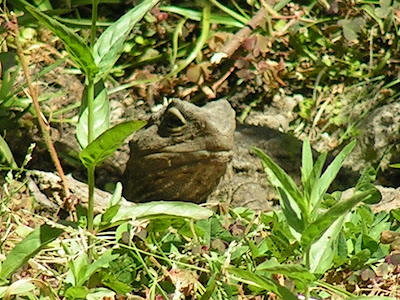
perhaps the tuatara's most famous, and unusual, feature is it's third eye...
which actually has some of the basic components of a real eye. these include a lens, cornea, retina of rod-like structures, and even degenerated nerve connection to the brain.
now tuatara's aren't the only creatures with such developments in the middle of their head. many more primitive vertebrates have similar structures as well. fish, amphibians, and other reptiles.
however in hatchling tuataras this parietal eye is particularly pronounced, and resembles a functional eye. as the animal grows up though this third eye is grown over by scales and scutes so that it is just nothing more than a more photosensitive patch on the skull.
 despite incredible adaptive resilience through geologic time, and the extreme changes they've endured, tuataras now face the threat of extinction. having survived in mammal free new zealand without competition from many other reptiles (new zealand only has 2 other major groups of reptiles and they are small geckos and skinks) the introduction of mammals to the islands has been devastating.
despite incredible adaptive resilience through geologic time, and the extreme changes they've endured, tuataras now face the threat of extinction. having survived in mammal free new zealand without competition from many other reptiles (new zealand only has 2 other major groups of reptiles and they are small geckos and skinks) the introduction of mammals to the islands has been devastating.the only healthy populations of tuataras now in the wild are on the remote islands surrounding new zealand.
which is the reason the southland museum launched its breeding program. as a means of trying to keep this amazing relic to my own time around for millions of years to come (hopefully!)...

 reading the sign i was also amazed to see that the tuatara also had a major cultural significance to the maori. they believed that these lizards were messengers of whiro, god of human suffering and hardship, and thus these reptiles were both a bringer of evil and thus very tapu. only men could eat them, for their evil would kill women and children, and even only the strongest of males were believed to be able to survive this experience...
reading the sign i was also amazed to see that the tuatara also had a major cultural significance to the maori. they believed that these lizards were messengers of whiro, god of human suffering and hardship, and thus these reptiles were both a bringer of evil and thus very tapu. only men could eat them, for their evil would kill women and children, and even only the strongest of males were believed to be able to survive this experience...speaking of maori that reminds me on my way out here right now i should pick up a book on maori culture, and try to figure out what these baskets are about already...


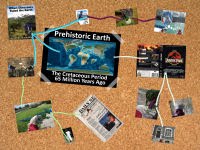
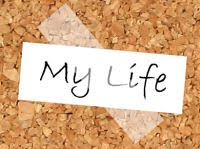

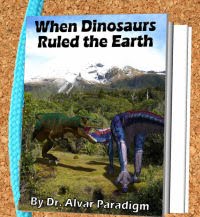


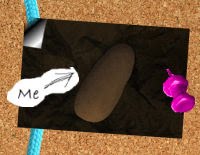





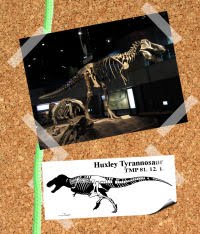








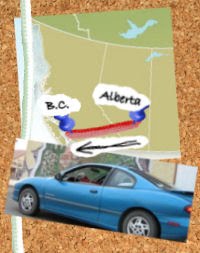






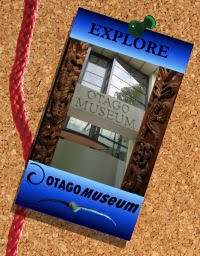



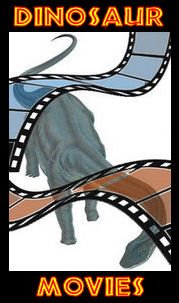






1 comment:
Tuataras are indeed cool. Thanks for the info and pictures!
Post a Comment